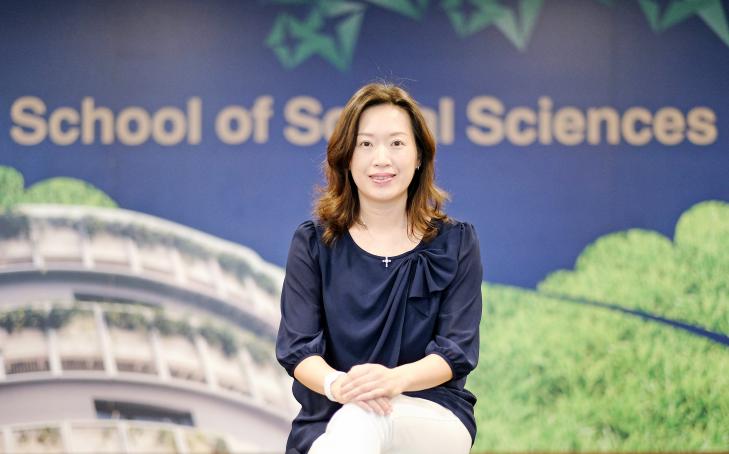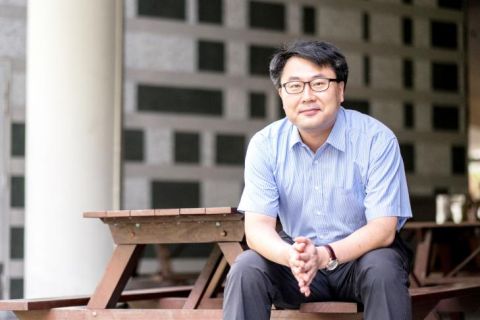
Research by SMU Assistant Professor Cheng Chi-Ying is unlocking how our cultural identity shapes our lives and attitudes, even at a subconscious level.

Photo Credit: Cyril Ng
By Feng Zengkun
SMU Office of Research – Singaporean parents who want to encourage their children to be more creative should try to be less kiasu.
The trait, which refers to an excessive fear of losing out, could partly explain why Singapore has been referred to as “less vibrant” when compared to other multicultural cities such as New York and Paris, says Assistant Professor Cheng Chi-Ying of the Singapore Management University (SMU) School of Social Sciences, who studies multiculturalism and cultural identities.
While people in Singapore often meet others from diverse backgrounds, the creativity that such exposure usually sparks is dampened by kiasuism, she says. “Most Singaporeans speak at least two languages and have extensive multicultural experiences, but Singaporean culture is also highly competitive, and many Singaporeans endorse the kiasu mindset.”
Kiasuism hurts creativity—and how to fight it
The research—published in a 2015 paper, “The Effects of Cosmopolitan Culture, Competitiveness and Need for Cognitive Closure on Creativity”, in the (online) journal Academy of Management Best Paper Proceedings—is among the first to establish the limits of multiculturalism’s boost to creativity.
In one experiment, 187 Chinese Singaporeans who had spent less than one year abroad were split into three groups, and asked to talk about Singaporean culture, Singapore as a country, and their favourite sports respectively. All of them then took a test that evaluates people’s creativity.
By talking about Singaporean culture, the first group was primed to think about multiculturalism - psychologically unlocking any creativity benefits they might have accrued from it. Their test scores were then divided into those who had mentioned kiasuism versus those who had not. Compared to the two control groups, the highest creativity scores came from those who were primed to think of their culture and did not mention kiasuism.
A second experiment with 191 Chinese Singaporeans showed that when people were reminded of kiasuism, those kiasu ones who had a strong sense of conformity exhibited the least creativity among all. When people were not reminded of kiasuism, the kiasu ones were still less creative than others.
“Professors who want their students to be more creative should try to create a less competitive environment in order not to activate the students’ kiasu tendencies,” Professor Cheng says. She cautions, however, that the fear of losing out is not necessarily a bad thing. “We’ve found that Singaporeans with higher kiasu tendencies tend to be more persistent in some tasks. When their kiasuism is ‘activated’, they devote more effort.”
Getting Chinese employees excited about work
Cultural identity also plays a role in the workplace, says Professor Cheng. After surveying more than 600 American and Chinese employees in two countries, Professor Cheng and colleagues found that while American employees prized integrity in their supervisors, Chinese were more forgiving towards integrity lapses and valued personal support from their leaders more.
The study posits that Americans have a “dignity” culture where integrity is viewed as an innate trait, and those without it are considered untrustworthy. Therefore, American employees are unlikely to develop a personal bond to untrustworthy supervisors, even if these supervisors compensate by extending personal support to their employees. “In short, the only way for American supervisors to win their subordinates’ strong commitment is to show high personal integrity and strong support for their employees,” Professor Cheng explains.
Chinese, on the other hand, have a “face” culture where social relationships are valued more. They understand that people may sometimes compromise their integrity to “save face” or to help others do so. Integrity is considered precious but hard to sustain.
As such, while Chinese employees will go to the ends of the earth professionally for the rare leader with integrity, it is not a prerequisite for their commitment. The supervisor who cares greatly for employees—by giving them time off to pick up their children from school, for instance—can earn equally strong dedication from them.
“In Taiwan, for instance, the boundary between personal and professional life is not that clear,” Professor Cheng elaborates. “Managers need to understand that for Chinese employees, and especially in Chinese organisations, personal needs have to be catered for and addressed.”
The findings of her study, which has wide-ranging, practical implications on how organisations can spur greater commitment from their employees, has been published in an article, “When do subordinates commit to their supervisors? Different effects of perceived supervisor integrity and support on Chinese and American employees” by the journal The Leadership Quarterly.
Multiculturalism’s multiple effects
It may be hard to believe at first, but even thinking of one’s heritage and culture can subconsciously affect one’s linguistic skills, according to research Professor Cheng and colleagues published in the journal The Proceedings of the National Academy of Sciences.
In collaboration with Professor Michael Morris from the Columbia Business School in the United States, Professor Cheng found that when Chinese, with Mandarin as their mother tongue, were exposed to pictures of Chinese icons such as the Great Wall of China, the fluency of their English decreased. Even though they were happy to converse in English, the images had interfered with their ability at the subconscious level.
Professor Cheng muses on the diversity of ways our cultural identity shapes our lives and attitudes, even at a subconscious level. “Multiculturalism affects people in so many ways, sometimes even without their knowledge.”
See More News
Want to see more of SMU Research?
Sign up for Research@SMU e-newslettter to know more about our research and research-related events!
If you would like to remove yourself from all our mailing list, please visit https://eservices.smu.edu.sg/internet/DNC/Default.aspx

